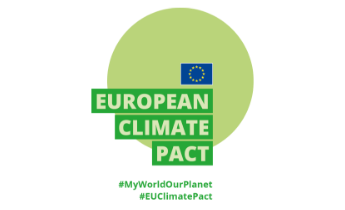About Panels
Panel 1
Key elements of green infrastructure: a faster path to energy efficiency and climate neutrality
When planning new urban spaces, it is necessary to apply the process of integrated planning, design, construction, and arrangement that includes all urban infrastructure and urban greenery with the aim of creating and building a climate-neutral urban space. Given that the building sector is responsible for around 40% of final energy consumption primarily used for heating and cooling of public, commercial or residential buildings, there is an urgent need to reduce energy consumption in buildings to reverse this negative trend. Also, it is urgent to accelerate the energy renovation rate to increase energy efficiency and accelerate the development and implementation of green infrastructure and nature-based solutions that will ensure faster achievement of climate neutrality in the building sector.
One of the first steps is to analyse the existing situation and develop a green urban renewal strategy. This strategy will include a plan for developing green infrastructure and circular management of space and buildings.
Sustainable urban planning increases climate change adaptation and the resilience of cities to climate-related risks such as drought, floods, sea level rise or temperature extremes. In addition to reducing the risk of climate change, sustainable urban planning with circular management of buildings, natural construction materials and high energy efficiency has a positive effect on increasing the quality of life of citizens and reducing depression, cardiovascular and other diseases associated with low quality of housing and low quality of life.
Panel 2
Efficient waste management in the context of the energy transition and climate neutrality
86.9% of greenhouse gas emissions in the waste sector are related to solid waste disposal, accounting for about 9% of the Republic of Croatia's total greenhouse gas emissions.
In the waste sector, citizens play a key role in reducing emissions and changing their habits and behaviour, primarily in waste prevention. Cities also play a key role, as they must be leaders in the implementation of the closure of existing landfills, as well as the establishment of an efficient waste management system. An adequate system includes, in addition to the establishment of waste management centres, the establishment of separate collection, recycling and recovery of waste to reduce the amount of solid waste. Recycling centres with sorting plants are the basis for the circular use of raw materials obtained from separately collected and recovered waste. With the separate collection and recovery of waste, waste management centres can, with the help of advanced technologies, use waste to obtain raw materials for material recovery, but also to help in the production and production of various fuels (hydrogen, syngas, liquid fuels). Waste can also encourage the production of renewable energy sources through landfill gas power plants and gas from wastewater treatment plants or biogas and biomass power plants collected through proper waste separation.
Energy from power plants produced by pre-sorted waste can be used for heating or electricity generation. In this way, safe and renewable energy is obtained from waste, which would adversely contribute to climate change by producing methane and other harmful gases if left unsorted, as well as building materials that can be further used.
Properly used waste can be a global solution in the fight against climate change. It can also contribute to climate neutrality by increasing the efficiency of raw material reuse and reducing the negative impact of waste on people and the environment.
Panel 3
Sustainable transport solutions for European cities
The transport sector is responsible for around a quarter of total CO2 emissions in the EU, and road transport accounts for more than 70% of emissions in the transport sector at the EU level.
According to available national data, in 2018, transport in the Republic of Croatia accounted for 27% of total greenhouse gas emissions, of which road passenger transport accounted for 71.6%. Compared to 1990, emissions in the transport sector increased by 60.4% by 2018, and according to data from the European Environment Agency, at the EU level, the transport sector is the only sector in which greenhouse gas emissions have increased by more than 30% in the last three decades.
Therefore, accelerating the decarbonisation of the transport sector is key to transitioning to a clean, resource-efficient, and climate-neutral future. Reforms and measures to establish an intermodal and integrated transport system with vehicles using electric drive or low-carbon and climate-neutral fuel must be accelerated.
Cities play a key role in establishing and promoting sustainable integrated urban and intercity transport, emphasising the development of railways for passenger and freight transport, intending to reduce the burden on road passenger transport and emissions. Further investment in bicycle transport, available charging stations for electric and alternatively powered vehicles, more energy-efficient fuels and new technologies will significantly reduce energy consumption and greenhouse gas emissions in urban centres.
Optimising public transport and intelligently managing traffic and public parking areas will, among other things, increase the quality of life in cities, reduce the level of respiratory and air pollution-related diseases, and reduce the death rate associated with road transport.
Key elements of green infrastructure: a faster path to energy efficiency and climate neutrality
When planning new urban spaces, it is necessary to apply the process of integrated planning, design, construction, and arrangement that includes all urban infrastructure and urban greenery with the aim of creating and building a climate-neutral urban space. Given that the building sector is responsible for around 40% of final energy consumption primarily used for heating and cooling of public, commercial or residential buildings, there is an urgent need to reduce energy consumption in buildings to reverse this negative trend. Also, it is urgent to accelerate the energy renovation rate to increase energy efficiency and accelerate the development and implementation of green infrastructure and nature-based solutions that will ensure faster achievement of climate neutrality in the building sector.
One of the first steps is to analyse the existing situation and develop a green urban renewal strategy. This strategy will include a plan for developing green infrastructure and circular management of space and buildings.
Sustainable urban planning increases climate change adaptation and the resilience of cities to climate-related risks such as drought, floods, sea level rise or temperature extremes. In addition to reducing the risk of climate change, sustainable urban planning with circular management of buildings, natural construction materials and high energy efficiency has a positive effect on increasing the quality of life of citizens and reducing depression, cardiovascular and other diseases associated with low quality of housing and low quality of life.
Panel 2
Efficient waste management in the context of the energy transition and climate neutrality
86.9% of greenhouse gas emissions in the waste sector are related to solid waste disposal, accounting for about 9% of the Republic of Croatia's total greenhouse gas emissions.
In the waste sector, citizens play a key role in reducing emissions and changing their habits and behaviour, primarily in waste prevention. Cities also play a key role, as they must be leaders in the implementation of the closure of existing landfills, as well as the establishment of an efficient waste management system. An adequate system includes, in addition to the establishment of waste management centres, the establishment of separate collection, recycling and recovery of waste to reduce the amount of solid waste. Recycling centres with sorting plants are the basis for the circular use of raw materials obtained from separately collected and recovered waste. With the separate collection and recovery of waste, waste management centres can, with the help of advanced technologies, use waste to obtain raw materials for material recovery, but also to help in the production and production of various fuels (hydrogen, syngas, liquid fuels). Waste can also encourage the production of renewable energy sources through landfill gas power plants and gas from wastewater treatment plants or biogas and biomass power plants collected through proper waste separation.
Energy from power plants produced by pre-sorted waste can be used for heating or electricity generation. In this way, safe and renewable energy is obtained from waste, which would adversely contribute to climate change by producing methane and other harmful gases if left unsorted, as well as building materials that can be further used.
Properly used waste can be a global solution in the fight against climate change. It can also contribute to climate neutrality by increasing the efficiency of raw material reuse and reducing the negative impact of waste on people and the environment.
Panel 3
Sustainable transport solutions for European cities
The transport sector is responsible for around a quarter of total CO2 emissions in the EU, and road transport accounts for more than 70% of emissions in the transport sector at the EU level.
According to available national data, in 2018, transport in the Republic of Croatia accounted for 27% of total greenhouse gas emissions, of which road passenger transport accounted for 71.6%. Compared to 1990, emissions in the transport sector increased by 60.4% by 2018, and according to data from the European Environment Agency, at the EU level, the transport sector is the only sector in which greenhouse gas emissions have increased by more than 30% in the last three decades.
Therefore, accelerating the decarbonisation of the transport sector is key to transitioning to a clean, resource-efficient, and climate-neutral future. Reforms and measures to establish an intermodal and integrated transport system with vehicles using electric drive or low-carbon and climate-neutral fuel must be accelerated.
Cities play a key role in establishing and promoting sustainable integrated urban and intercity transport, emphasising the development of railways for passenger and freight transport, intending to reduce the burden on road passenger transport and emissions. Further investment in bicycle transport, available charging stations for electric and alternatively powered vehicles, more energy-efficient fuels and new technologies will significantly reduce energy consumption and greenhouse gas emissions in urban centres.
Optimising public transport and intelligently managing traffic and public parking areas will, among other things, increase the quality of life in cities, reduce the level of respiratory and air pollution-related diseases, and reduce the death rate associated with road transport.
Organizators and partners
 |
 |
 |
 |
 |
 |
 |


